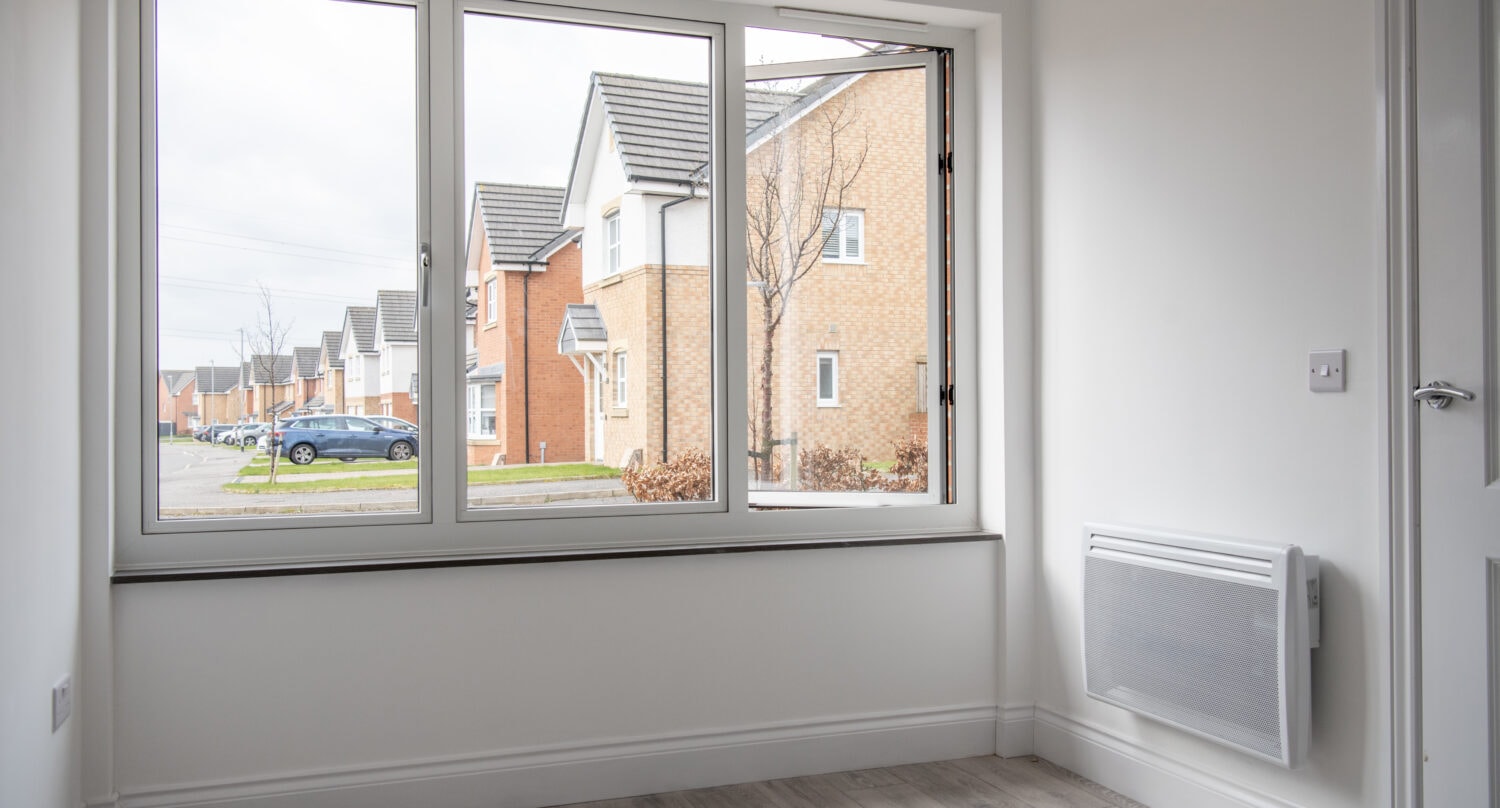HOW TO PREVENT CONDENSATION ON WINDOWS
Whether you live in a well-insulated city flat or a traditionally constructed country cottage, condensation is an unfortunate cold weather phenomenon that we’re all probably familiar with.
Annoying and unsightly, condensation has a habit of building up quickly, especially in our bedrooms, bathrooms, and kitchens – and there are few things more irritating than having to wipe away the haze on your windows or bi-fold doors first thing in the morning to enjoy the view.
But condensation isn’t just limited to the winter months, and nor is it simply a persistent but benign pain. Left untreated, the causes of excessive condensation can lead to damp and even mould, damaging your windowsills and potentially leading to health problems in the future.
Fortunately, there are plenty of things you can do to reduce the build-up of condensation in your home, many of which cost you nothing at all. But, before we go into how you can start preventing condensation, let’s first cover what causes condensation to begin with.

WHAT CAUSES CONDENSATION ON WINDOWS?
When it comes down to what causes condensation on windows, and other surfaces around the home, the explanation is actually relatively simple – condensation is merely excess water from moist air settling naturally. More specifically, condensation forms when warm temperatures come into contact with a cold surface. This sudden and sharp temperature difference causes the moisture in the air to physically condense, resulting in a thin layer of water coating the surface.
This is why condensation is so common in the winter months. For example, in winter, we want our homes to be warm, so we keep our windows shut and central heating on. Naturally, this prevents the circulation of cold air from outside as well as creating a severe internal-external temperature imbalance, leading to moisture building up on our windows. In summer, on the other hand, we want to stay as cool as possible, so we open our windows and turn our heating off, leading to constant fresh air circulation and level temperatures.
IS CONDENSATION A SERIOUS PROBLEM?
In the majority of cases, condensation is nothing more than an early morning annoyance. In fact, the sign that your windows are coated in condensation can be a good thing, as it indicates that your home is properly insulated, and your window glazing is doing its job.
However, if you find condensation is coating the entirety of your windows and pooling on your windowsill, you may want to take it more seriously. Wet sills can cause damp and black mould growths, neither of which you want, so you may need to look into resealing or replacing your windows if this is a persistent issue.

IS PREVENTING CONDENSATION POSSIBLE?
For those seeking a permanent solution, we have some disappointing news. Condensation is essentially unavoidable as it’s a naturally occurring process. The best thing you can do is take steps to minimise how much condensation builds up in your home. For example, the better insulated and ventilated your home is, the less condensation you’ll have.
HOW TO STOP CONDENSATION ON WINDOWS
Now that we’ve covered why condensation occurs, let’s touch on how to minimise its build-up in your home, starting with the most common question – does opening windows reduce condensation?
The answer to this is a quick and simple yes!
OPENING YOUR WINDOWS
Opening your windows for proper ventilation is perhaps the easiest thing you can do to reduce condensation in your home. Not only does it maintain a lower overall humidity by circulating in outside air, but it also helps to freshen up your room by removing bad odours.
While it might be cold outside in winter, opening your window a crack first thing in the morning for as little as 15 minutes can substantially reduce the level of condensation. This is especially important in your bedroom, where just the effects of your breathing overnight can increase a room’s humidity.


TURNING THE HEATING ON
Alongside opening your window, another solution to reduce condensation is to have your central heating running at a low but constant setting, to avoid sudden shifts in temperature.
When winter hits, many people prefer to set their heating to come on an hour or so before they get up, especially in the bedroom. But while waking up to a warm room is nice, this jarring temperature increase contributes to rapid condensation growth. By opting for a low but consistent temperature, you minimise the potential for abrupt temperature changes.
UPGRADING YOUR INSULATION
Finally, if you’ve tried both these tips and heavy condensation is still a continual issue, then you may need to consider investing in better insulation for your home.
A good set of aluminium-framed windows with double-glazing can do wonders for sealing your property, while the addition of insulation in your cavity walls and loft will go a long way to maintaining consistent home temperatures, simultaneously making your home more energy-efficient while reducing sudden temperature spikes.
HOW TO STOP CONDENSATION ON DOUBLE-GLAZED WINDOWS IN WINTER
Condensation is essentially unavoidable. Even if you have the best double-glazing possible, you will likely still see some condensation build up on your windows.
However, if you’re finding that you have excessive condensation, that probably means either your windows aren’t installed properly, and you should reach out to an expert or the company who installed them to get this fixed, or more likely that you don’t have sufficient ventilation within the property.
WHAT TO DO WITH CONDENSATION INSIDE WINDOWS
When condensation occurs, it should only be present on the inside or outside of your windows. If you’re wiping condensation away and it’s still present within your window, this is an indication of poor insulation or a gap in the window’s seal, both of which should be seen to by an expert.
OTHER WAYS TO PREVENT AND MINIMISE THE EFFECTS OF CONDENSATION
With the main methods of tackling condensation out of the way, what are some of the other steps you can take to reduce the overall humidity of your home?
- Avoid humidifiers
Well, for starters, you might want to think about getting rid of any humidifiers you have around the house. Unless a room is exceptionally dry, all a humidifier is doing is contributing to the moisture content in the air. Instead, freshen up these rooms by opening a window or door for increased air circulation.
- Invest in a dehumidifier
And speaking of humidifiers, if you often have to dry your clothes inside, such as in wet winter weather, then investing in a dehumidifier might be a wise choice. Dehumidifiers measure the moisture content in the air and then actively work to reduce it, collecting all the water inside their container while helping to dry clothes faster.
- Don’t dry clothes on the radiator
As a side note for drying clothes, you should avoid hanging them on your radiator whenever possible, as this just increases the rate at which condensation forms.
- Choose moisture-loving plants
Finally, other smaller steps to take could include moving any windowsill house plants further away from your windows or replacing them with moisture-loving plants to absorb excess humidity.
- Install extractor fans
You might also want to consider installing extractor fans in your bathroom and kitchen for when showering or cooking, as well as keeping doors shut and pan lids on to prevent moist air from spreading around the house.
At the end of the day, you’re never going to be able to stop condensation from forming on your windows. Worst comes to worst, you can always wipe the condensation away with a cloth or window vacuum, but we still recommend investing in proper windows and glazing for better home insulation.
And speaking of glazing, here at Express, we’re experts in everything glass related. From brand-new sliding doors to a variety of glass roofing systems, our experts have more than a decade of experience helping our customers renovate their homes.
Get in touch today to see how our experts could help with your next project or visit us in person to see our full range of products displayed in our showrooms. Don’t forget to browse the rest of our blog for more useful articles like this one.








